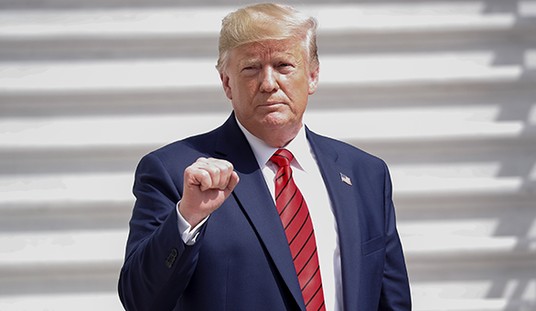Education bubbled back to the top of the presidential election this month, as both candidates pushed reform agendas in front of hostile audiences. John McCain issued a stinging rebuke to those who put teacher-union politics ahead of kids — in a speech at the union-loving NAACP.
Meanwhile, Barack Obama was actually booed while accepting the endorsement of the National Education Association, the nation’s biggest teachers’ union, because he reiterated his support for differential pay (merit pay, higher salaries for math and science teachers, bonuses for teaching in the worst schools, etc.). He also reminded the union that he supports charter schools.
But what can a president actually do about education, which is an area of state authority rather than federal? Some education reformers leapt to make that point in the wake of McCain’s remarks. It’s a question worth asking, because education is going to come up again before this campaign is over.
Well, here are five things the next education president (they’re all “education presidents” these days) can do to improve the nation’s schools without expanding federal authority over education beyond its current level:
1) Expand the D.C. voucher program to make it a national model. After the Democrats took over Congress, most people thought the federally funded voucher program in Washington D.C. would be toast. But, lo and behold, the chairman of the relevant House subcommittee has given the program a one-year pass and seems to be angling for a deal.
The thing is, the D.C. voucher system is actually not a very good program. It’s restricted to a relatively small number of students. Applicants need to fill out an absurd 17-page form to get in and it pays cash bribes to the decrepit, patronage-bloated D.C. school system for the students who do leave. This undermines the healthy, competitive incentives vouchers would otherwise bring to bear on public schools.
But what if the D.C. program were transformed into a national model for school choice done right? The next education president could propose to make every D.C. student eligible, make the program easy for parents to use, and restructure the bribes so that they don’t reward failure in the public system.
Obviously a big political fight would ensue, and the end result would not give voucher proponents everything they wanted. They might well get nothing at all.
But it would still be a fight worth having. If we’re going to be guided by the empirical evidence on what makes public schools better, competition from school choice is by far the most reliable strategy for improving public schools (among those for which we have evidence). Their success in improving public schools is one reason they’re so politically successful. The best thing the next president can do for education is to keep vouchers at the top of the national agenda. And it doesn’t hurt that the fight is a political winner, especially in D.C., where the public schools are particularly atrocious.
2) Preserve transparency of outcomes (i.e. testing). As I’ve written at greater length here, when all the bogus slogans for No Child Left Behind are discounted, the law’s real benefit is that it has finally induced schools to provide transparent information about educational outcomes. If the feds are going to chip in for education, it’s reasonable that their support be conditional on knowing what results the schools are producing. The data we get from NCLB tests are fueling an explosion of solid empirical science on what works in education, and are helping inform the public about the real state of things in the public school system. Whatever happens to NCLB as it comes up for renewal, transparent testing ought to remain a condition of federal subsidies.
3) Fund differential pay. There’s a pretty strong research consensus that teacher quality is one of the key factors in education outcomes. But teachers are currently paid like factory workers, not like professionals; they make the same salary regardless of how well they perform. We can’t expect to attract better performers into the teaching profession, or retain the ones we have, if teaching is the only professional field where pay is completely divorced from performance.
While teacher pay systems are set at the state level, where the unions always demand uniform pay during contract negotiations, the federal government can offer funding to support merit pay and other forms of differential compensation if a state chooses to allow it. If even one state decides to take the feds up on the offer, that would be a big victory — and a useful demonstration project.
If the next president is feeling really bold, he can propose that other federal subsidies be made conditional on accepting federally funded differential pay. For example, why should the feds pay for teacher training in states that undermine teacher quality by refusing to pay teachers more if they perform better? Why should they fund math and science programs in states that undermine math and science education by refusing to pay math and science teachers more (as they clearly should, since those skills are in higher demand elsewhere in the economy)? Why should they fund Title I, the federal program for high-poverty schools, in states that won’t provide bonus pay for the teachers in those schools?
I know that mandates attached to federal funding don’t sit well with a lot of federalists. But if states don’t want the mandates, they can turn down the funds. In fact, if some states walked away from federal funding because of increased mandates, that would give real federalism a big shot in the arm.
4) Improve data transparency. There was a huge dust-up in Washington recently over the program known as Reading First, when the official evaluation came out and found that it made no difference to outcomes. Some of the program’s defenders claimed (among other things) that the evaluation wasn’t properly carried out. The same thing happened with the official evaluation of the D.C. voucher program.
We’d all be better off if data were made available to a broad spectrum of scholars rather than having one study conducted by one set of researchers set up as the “official” evaluation. Then we wouldn’t have these really important questions come down to squabbling over whether or not one study was done right. Competition is good for schools, but it’s even better for research.
And these two programs are actually way ahead of the curve, in that any serious study was done at all. Most education programs are never studied in a serious way; we just keep plodding along, like the dinosaurs, not knowing which of our programs work and which don’t. All projects that receive federal funding should be subject to systematic data collection, and the data should be distributed to all interested scholars rather than used for an official evaluation.
For the same reason, the next education president should professionalize the Institute for Education Sciences. I know that this is taking us off to wonkland, but bear with me. The IES and its subsidiary, the National Center for Education Statistics, are supposed to make data available so that scholars can study education. This helps keep the government school system accountable to the public, and has also been crucial to the growth of better science on education policy.
But lately the IES has been tilting the playing field against reformers and toward the reactionary agenda of the teachers’ unions. Thankfully, after it did a politicized “study” that was torn to shreds by Harvard scholars, the humiliated agency had to promise to stop doing its own studies and to quit taking sides in education battles. But we shouldn’t rely on their word. The next education president should push for reforms that will ensure the nation gets accurate information, not union propaganda, about what’s going on in public schools.
5) Keep pushing the unions to obey the law. The biggest obstacle to all serious education reforms — choice, transparency, differential pay, accountability, you name it — is the teachers’ unions. They use the education system as a gravy train, and it’s hard to think of anything that’s done more damage to schools. And though the unions are much less powerful than they used to be, as the nationwide explosion of school choice programs attests, they’re still a force to be reckoned with.
A lot of their power comes from the big pot of money they collect from coerced union dues. The Supreme Court ruled years ago that federal law requires unions to refrain from spending coerced dues on politics, but the Labor Department was slow to enforce the law. Under the Bush administration, we’ve seen the first solid steps in this area; unions now must make a complete disclosure of all their political spending, which (amazingly) they were never required to do in the past.
But there’s still a lot of work to do. The teachers’ unions are still fighting to keep common-sense reporting requirements from applying to them. It took all the way until this April for a U.S. district court to rule that yes, teachers’ unions have to play by the same rules as everybody else. And of course that case must still wait for an appeal.
The next education president will need the political will to take on our education problems at the source. Transparency is a good start, but ideally unions shouldn’t be able to collect money for politics without explicit authorization from workers. That’s a matter of basic fairness.
There are other things a president can do, but these seem to me to be the clearest examples of areas where federal leadership can improve education without expanding federal authority any further over the states. Whether any of them will actually happen is of course for the politicians — and ultimately the voters — to decide.









Join the conversation as a VIP Member